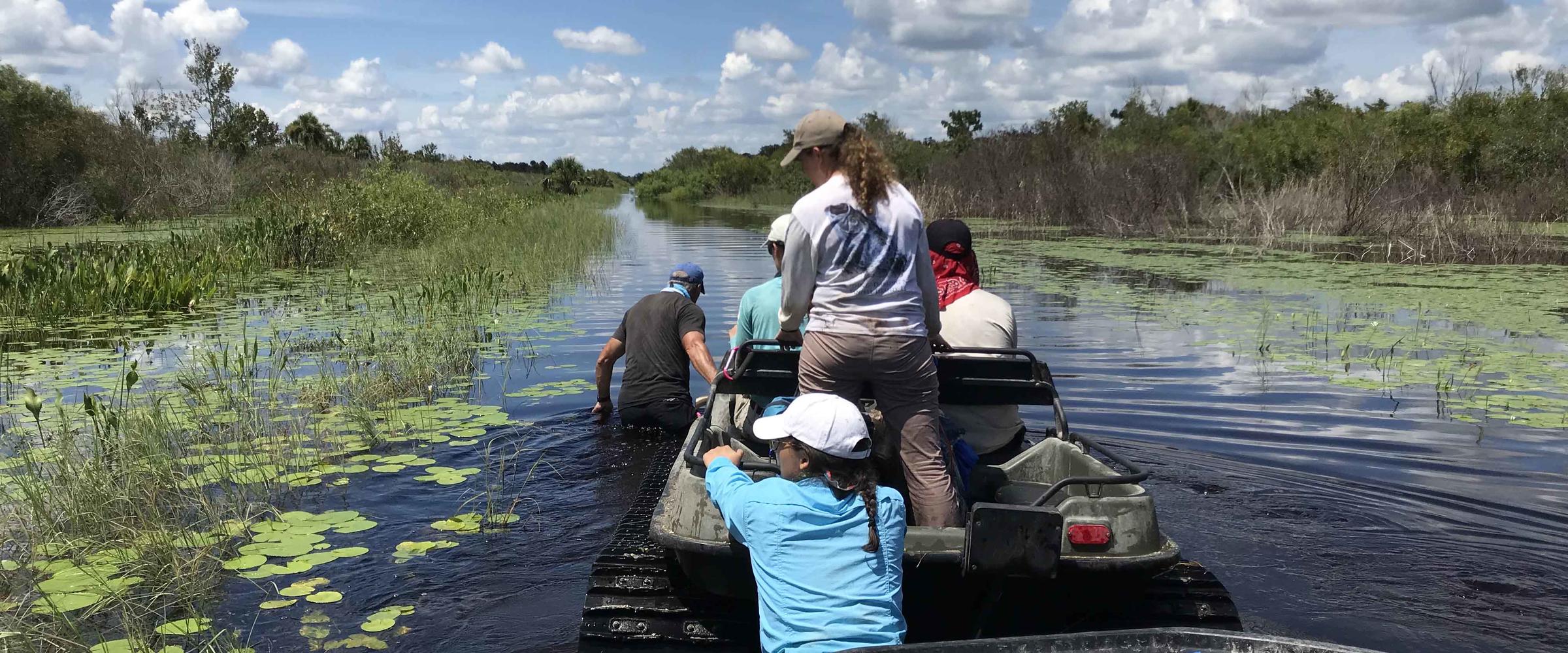Over the summer, Audubon’s Western Everglades Research Center helped collect data on fish, frogs, and aquatic invertebrates in the Picayune Strand Restoration Project. These wetland fauna tell scientists and project managers how restoration is going. Picayune Strand was the very first Comprehensive Everglades Restoration Plan (CERP) project to be started back in 2007. Its goal is to restore 55,000 acres of an old subdivision called Golden Gate Estates back into wetlands and habitat for Wood Storks, Florida Panthers, and other keystone Everglades wildlife.
Audubon scientists are encouraged by what they’ve seen on the ground: formerly dry wetlands filled with aquatic fauna- reestablishing wading bird foraging grounds that haven’t been used for decades! Two six-foot-deep, miles-long canals plugged and hundreds of miles of roads removed. In addition to the untold benefits for wildlife, the resulting rehydration of parched wetlands provides critical wet season water storage and reduces the risk of devastating dry season wildfires in this region. When completed, more than 170,000 acres will be restored including downstream estuaries and neighboring public lands.
This unprecedented restoration work demands guidance from monitoring data to help project managers adapt and learn as implementation progresses. Fish, crayfish, and frogs are ecosystem indicators that respond quickly to changes in hydrology. Picayune Strand will end up costing over $500 million and data like these collected by Audubon and our partners at Johnson Engineering, Inc. and Florida Gulf Coast University are essential. This work is not just for Wood Storks and Florida Panthers. Bringing back thousands of acres of high-functioning wetlands is vital to protect our communities by:
• Buffering extreme flood events by storing and holding water,
• Cleaning and filtering water with its mosaic of plant communities, reducing nutrients that exacerbate blue- green algae and red tide,
• Supporting natural fire regimes and helping prevent large, catastrophic wildfires, and
• Countering the effects of a changing climate and sea level rise.
While providing important restoration progress data on the Picayune Strand Restoration Project, Audubon is also keeping an eye on another vital CERP project in the Big Cypress Swamp region called the Western Everglades Restoration Project. This project aims to identify opportunities to improve the quantity, quality, timing, and distribution of water needed to restore and reconnect the Western Glades to the overall Everglades ecosystem. The future of the Greater Everglades Ecosystem and South Florida’s families depend on projects like these and Audubon research that informs their design and implementation.




